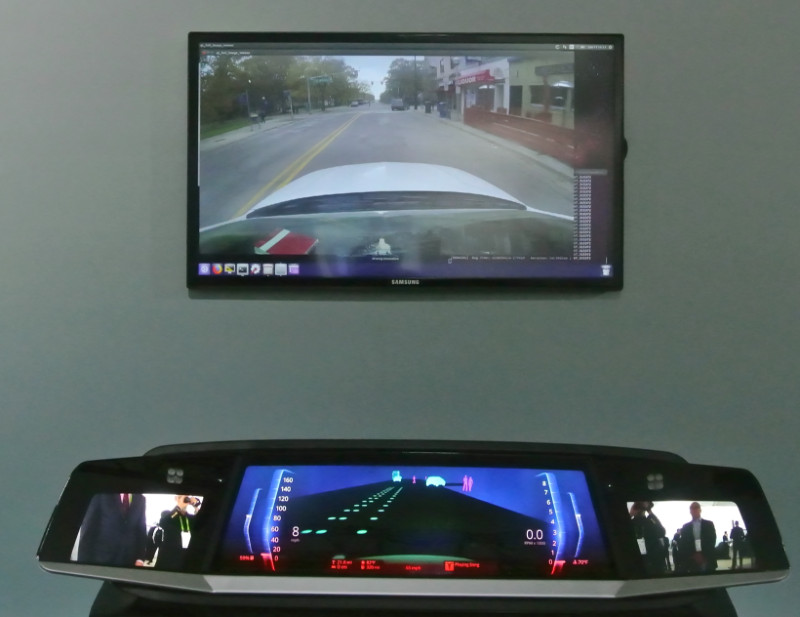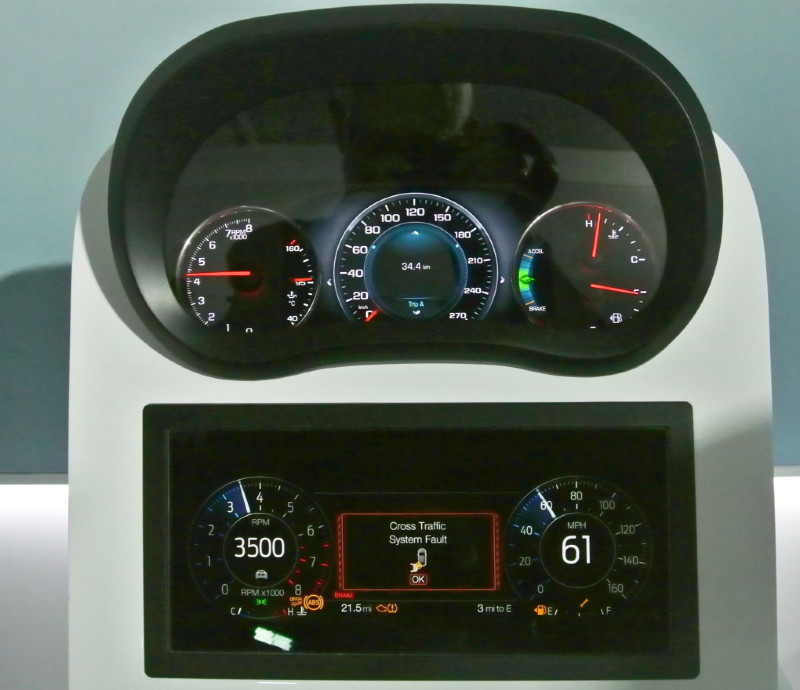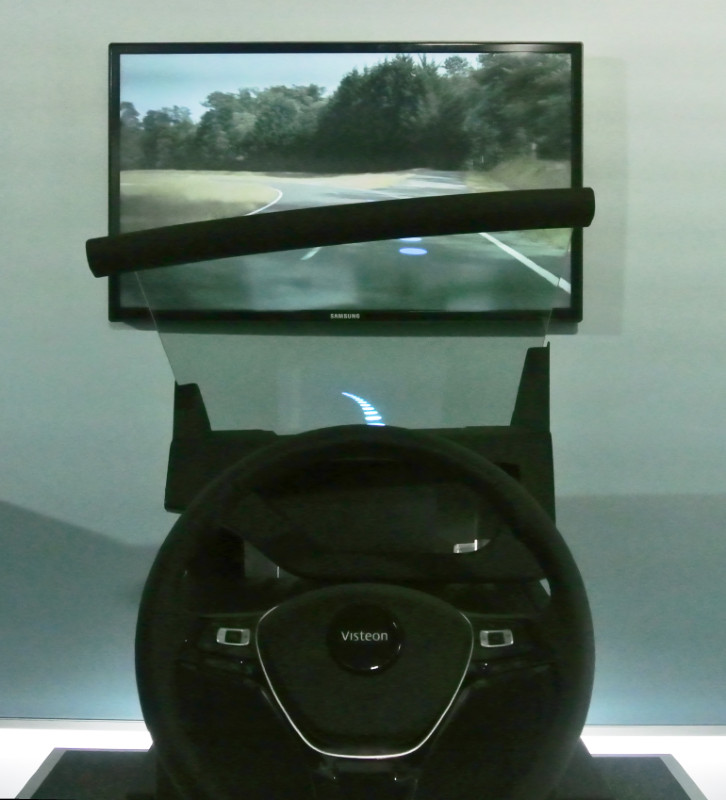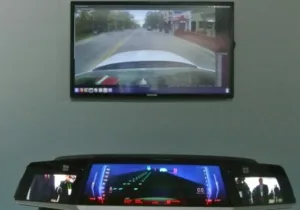Tier 1 automotive supplier Visteon thinks it has found a display sweet spot. While other automotive suppliers are developing clusters and cockpits with OLEDs and QLEDs, Visteon feels that exploiting the current oversupply of high-quality conventional LCDs will allow them to supply automotive display systems at very competitive prices, we were told by Qais Sharif, Vice President, Global Product Management, Driver Information & Displays.
Among the products Visteon showed in its tent in the Las Vegas Convention Center’s Central Plaza was a 4k x 1k instrument cluster with driver monitoring and ADAS visualization (Fig. 1). The 20.3-inch fee-form display features local dimming with 32 x 8 (256) zones and a pixel density of about 200 dpi.
 Fig 1. This Visteon 20.3″ local-dimming instrument cluster features ADAS visualization. In this case, that means the display is highlighting the pedestrians and vehicles that are not easily visible in the through-the-windshield view shown on the wall display. The double road-dividing line is also shown. By not attempting to overlay the ADAS enhancements on the real-world view with an augmented-reality HUD, Visteon provides considerable functionality with greatly reduced complication, cost, and hardware volume. (Photo: Ken Werner)
Fig 1. This Visteon 20.3″ local-dimming instrument cluster features ADAS visualization. In this case, that means the display is highlighting the pedestrians and vehicles that are not easily visible in the through-the-windshield view shown on the wall display. The double road-dividing line is also shown. By not attempting to overlay the ADAS enhancements on the real-world view with an augmented-reality HUD, Visteon provides considerable functionality with greatly reduced complication, cost, and hardware volume. (Photo: Ken Werner)
Visteon is not, of course, ignoring OLEDs. The company showed a pOLED Instrument cluster with a hot-formed glass lens (Fig. 2), and another on cold-formed glass.
 Fig. 2. This pOLED cluster has a hot-formed glass lens. Hot forming yields a more elegant package, but cold forming is less costly. (Photo: Ken Werner)
Fig. 2. This pOLED cluster has a hot-formed glass lens. Hot forming yields a more elegant package, but cold forming is less costly. (Photo: Ken Werner)
Also on exibit was a dimmable lens display (Fig. 3). Ordinarily, an automotive display is dimmed by, in the case of an LCD, reducing the backlight luminance. But if the OEM wants to have a flush display that integrated with its surroundings and matches the luminance of lights and other displays, dimming by adjusting the transmissivity of the lens provides a solution.
 Fig. 3. A dimmable-lens display (below) provides dimming for displays in a flush dash. (Photo: Ken Werner)
Fig. 3. A dimmable-lens display (below) provides dimming for displays in a flush dash. (Photo: Ken Werner)
Visteon is the leader in combiner-type head-up displays (HUDs), and the company is now getting more active in windshield-type HUDs. The company has patents on windshield HUDs that can be viewed with polarized glasses. In addition to simple HUDs, Visteon was showing an augmented reality windshield HUD (Fig. 4), which might appear in 2018 or 2019 in a car from a premium German manufacturer. Because an AR HUD occupies a large volume of space beneath the dash, Visteon sees this solution as being limited to large cars and SUV. The company does not foresee a technology that would shrink AR HUDs enough in the foreseeable future to allow them to be incorporated in smaller vehicles. – Ken Werner
 Fig. 4. Visteon’s AR HUD could appear in a premium German car this year or next. (Photo: Ken Werner)
Fig. 4. Visteon’s AR HUD could appear in a premium German car this year or next. (Photo: Ken Werner)

